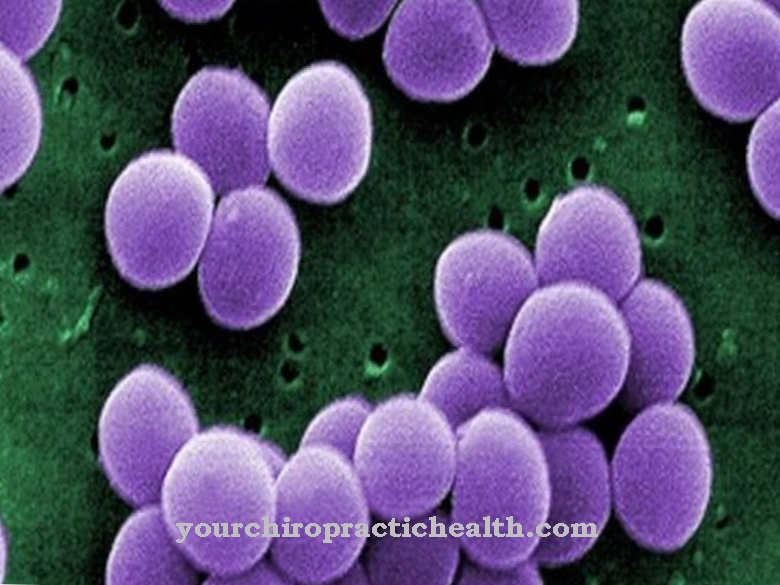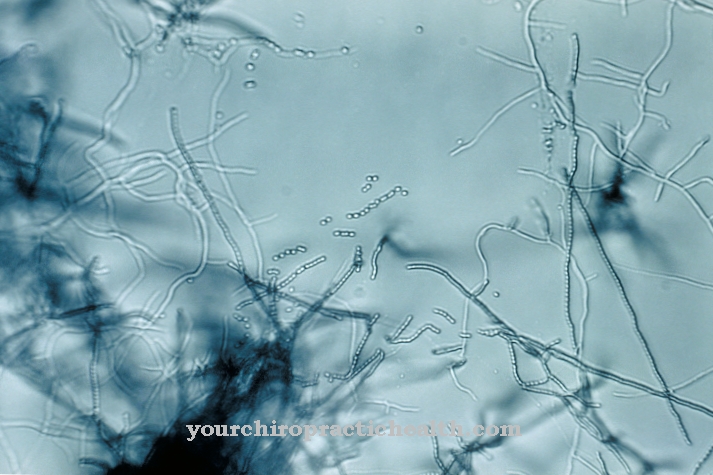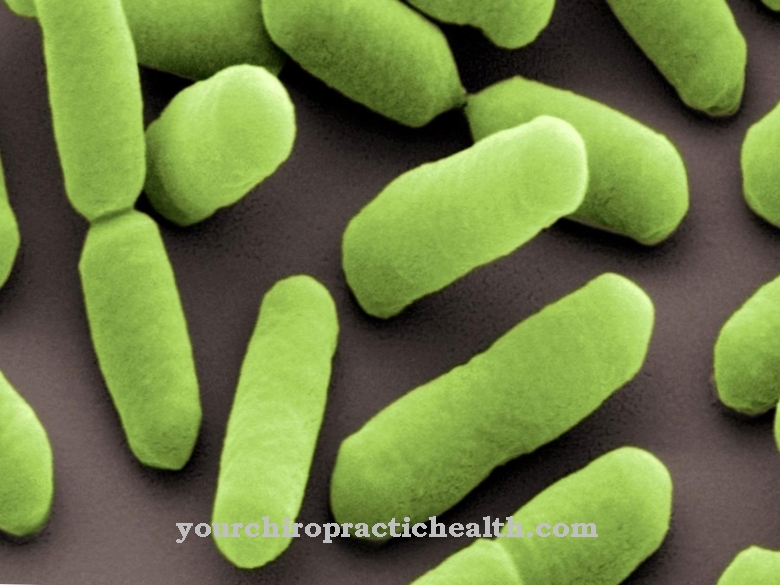Of the Trichophyton rubrum is a dermatophyte, i.e. a fungus that primarily affects the skin and the skin appendages. In addition to the Trichophyton rubrum, about 20 other species are known. It is the most important causative agent of dermatophytosis (tinea).
What is Trichophyton rubrum?
In addition to epidermophytes and microspores, the Trichophyton belongs to the dermatophytes. Dermatophytes belong to the thread or hyphae fungi. They mainly affect skin, hair and nails and are responsible for the corresponding mycoses. In addition, the Trichophyton rubrum is a parasite, that is, it attacks a host and benefits from living together without the host itself having any benefit, but on the contrary, being harmed.
The diseases caused by Trichophyton rubrum are called tinea, a clearly circumscribed, circular change of a skin area, which can be lighter in the center, while the edge shimmers reddish. This can be located almost anywhere on the body. Here, the pathogen usually only affects the superficial layers of the skin, deeper layers are rarely reached. The Trichophyton rubrum is one of the most common causative agents of dermatomycosis.
In addition to humans, the Trichophyton rubrum can also attack animals, which can transmit the pathogen further.
Occurrence, Distribution & Properties
The Trichophyton rubrum occurs almost everywhere. While it used to be widespread in the Middle East and the USA, it has now spread all over the world, in Europe its frequency has even increased sharply in recent years. In Germany alone, almost every fifth German is infected with a Trichophyton rubrum.
Trichophyton and other dermatophytes like to live in areas that are humid and warm, which is why they most often attack the spaces between the toes and skin folds. But the pathogen affects not only the skin but also hair and nails. With every step an affected person loses so many flakes of skin, all of which can be infectious.
Trichophyton rubrum is primarily transmitted anthropophilically, i.e. when there is contact from person to person. A highly infectious source is when people are together in communal showers or changing rooms. In this way, the pathogen can be optimally transmitted to other people. Another possibility of transmission is from animal to human, i.e. zoophilic transmission. If a person keeps many pets or farm animals, the probability is high that an animal will hold the pathogen and pass it on when it comes into contact with humans. Another, but rather rare, possibility of transmission is from earth to human, also known as geophilic transmission. This mainly affects those who work a lot in the garden, for example.
The Trichophyton rubrum is a thread or hyphae fungus. These types of mushrooms need a lot of energy for growth, which they get from carbohydrates and keratin. The latter can be obtained from the skin and nails by extracting it with the help of their keratinase, a keratin-degrading enzyme. Other enzymes that help the fungus to attack the skin are numerous proteinases and elastases.
To diagnose Trichophyton rubrum, a few flakes of skin from the affected skin area are scraped off and embedded in a KOH solution. This can then be viewed under the microscope. Lush microconidia with numerous and multiple chambered macroconidia with smooth walls are then visible there. Conidia are the asexual form of reproduction. Furthermore, the Trichophyton rubrum can develop spores, which are so stable that they can still be infectious for months. In addition, the dermatophyte tends to exist chronically.
To differentiate the species of the Trichophyton rubrum, a culture on special nutrient media is necessary. This takes one to three weeks and woolly-looking cultures develop.
Mushrooms usually have an anamorphic and a teleomorphic form. With Trichophyton rubrum only the anamorphic form is known so far, i.e. the asexual form of reproduction. The sexual, i.e. the teleomorphic form, as with many other mushrooms, is not known for Trichophyton rubrum either.
You can find your medication here
➔ Medicines against redness and eczemaIllnesses & ailments
Trichophyton rubrum is the causative agent of dermatophytosis. This is a disease of the skin and skin appendages. This is also known as tinea, a reddish shimmering flaking of the skin. Although these are usually not dangerous diseases, they are very uncomfortable as infection is a major cosmetic problem. In addition, there is often severe itching.
Typical places that the fungus attacks are nails, damp skin folds and spaces between the toes. Trichophyton rubrum is the most common pathogen causing nail fungus (Tinea unguium), but also ringworm (Tinea corporis), which can spread over the entire body from one point. Affected areas can easily shed dandruff, which in turn can spread to other people.
The fungus can also affect facial hair (tinea barbae) or scalp hair (tinea capitis). With hair mycosis, the hair becomes brittle and it comes to loss. Kerion is the most severe form of hair mycosis, in which the fungus penetrates deep into the hair follicle and can lead to an ulcer.








.jpg)



















